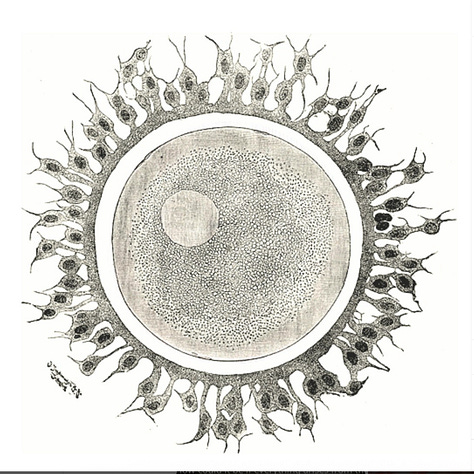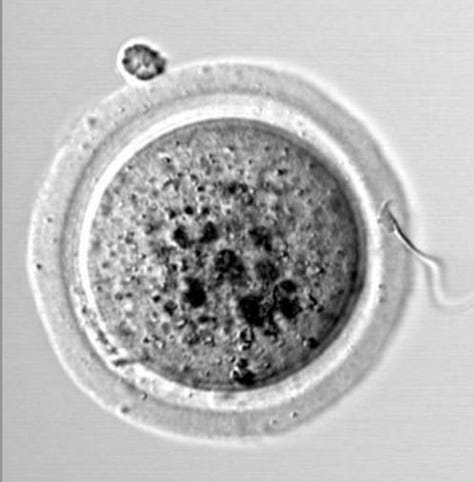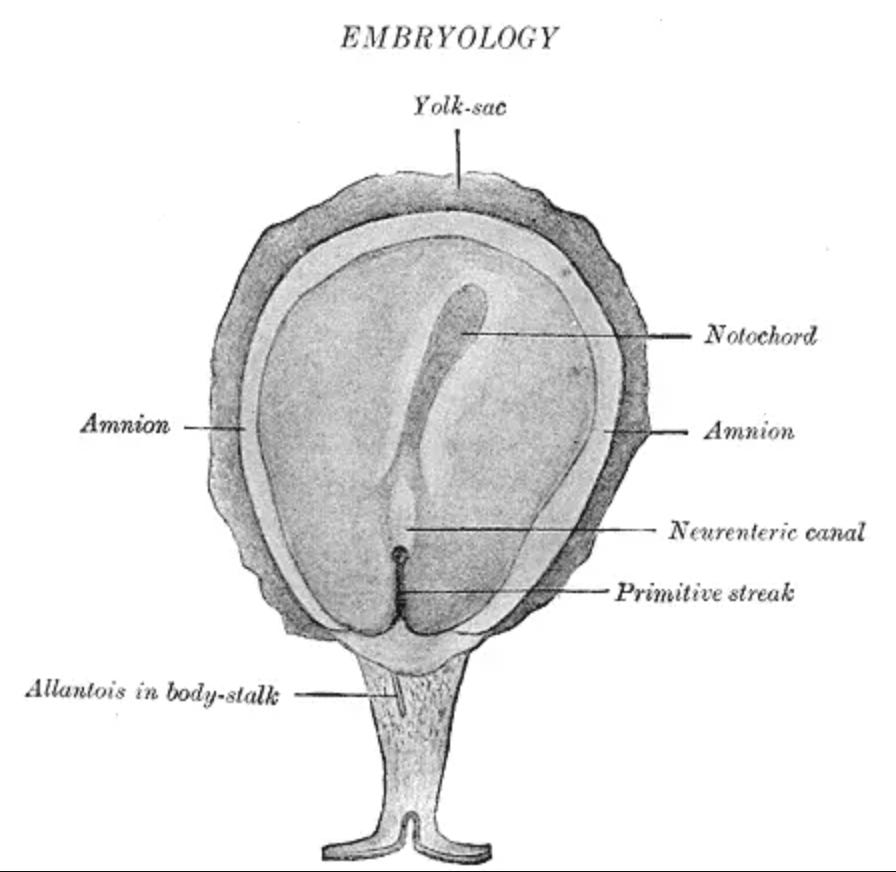Finding Your Original Spine
Microcosm, Macrocosm, and the Embryological Origins of Core
From Spine to Source
In Embodying the Spine in Movement and in Stillness, we explored how the spine serves as both a structural and energetic axis in yoga. We looked at its role in development, movement, and inner orientation. But the story of the spine doesn’t begin with vertebrae. It begins earlier—before bones, before joints, before movement itself.
To truly understand the spine as a core expression of support, intelligence, and consciousness, we turn to embryology. The origins of our central axis reveal not only how the spine forms, but how we come into being—how stillness becomes direction, how presence becomes structure.
This is where the inquiry deepens.
Why Embryology Matters in Yoga
An awe-inspiring amount of creativity and intelligence expresses itself during our embryological time. Each developmental phase reveals core truths that we live with for the rest of our lives—templates of organization and connection that may no longer be visible to the eye but continue to shape our inner architecture.
As yoga practitioners, we know that intelligence and consciousness are not limited to the mind. We find that the energy of which we are made is inherently intelligent. It enlivens every aspect of who we are. The structures and pathways of our embryology hold clues for practice and often echo the same patterns of energy flow that we recognize in yoga.



Egg and Sperm: Two Cells Become One
Two completely separate cells—egg and sperm—unite to become one: a single fertilized cell called a zygote. They come from different bodies and embody different qualities.
The egg lives a long life, having been in the female body since before birth. The sperm lives a short, decisive life. It moves quickly toward its goal. The egg waits. The sperm arrives in multitudes, but only one enters. The egg receives it and seals itself off. Union.
This moment of fertilization contains vast creative intelligence. All the chromosomes that will become a new human being are now present. But then, for quite some time, up to about 30 hours, the fertilized egg does nothing. Nothing. It sits there. We don’t know exactly what happens during this stillness. In embryological terms, that’s a long time.
This union of opposites—and the stillness that follows—is not unlike what we understand in yoga. From the joining of two separate energies, something entirely new is formed. And it begins not in motion, but in presence. The whole cascade of form and growth will follow. But not before this long, potent stillness.
Yoga’s Philosophical Container
Yoga draws from Samkhya Philosophy, which offers a map of creation based on two fundamental aspects: consciousness and form. In Sanskrit, these are known as Purusha and Prakriti.
Purusha is awareness itself—still, vast, and unmoving.
Prakriti is nature, form, process, movement. It is everything that moves and changes.
Their union gives rise to all of life. When united, they create the field of intelligent movement that is the living universe. Purusha and Prakriti’s union does not create an inherently good or bad universe. Their union is the source of everything that exists, and as such they create a powerful universe—a universe with nearly endless complexities and possibilities.
A foundational insight of this teaching is that the personal and the universal reflect one another. As in the macrocosm, so in the microcosm. We will find beauty, grace, love, and spectacularly elevated experiences. We will also find their opposites and everything in between.
Of course, we are expressions of this universe—and importantly, we are vital participants in it. Endowed with intelligence and options, we have choices to make. Yoga asks us to explore this whole situation not as a concept, but as a lived reality.
What is awareness?
What is form?
What is the nature of who we are?
We turn inward and begin to inquire.
We explore ourselves not just as individual histories or personalities, but as radiant presence. We begin to sense the inner sea of intelligence that is flowing in our blood and beating our hearts. This isn’t about finding happiness. It’s about seeing clearly.
Who are we in this?
What are we responsible for—and what is not our responsibility to carry?
Yoga is Self-Inquiry
The body is not separate from the cosmic weave. The individual is not separate from the universal. This is why we use our own bodies and lives as the ground of practice.
We observe structure, form, and the hidden templates that underlie who we are. We explore ourselves in space, and we explore ourselves in time. We remember the movement of origin that still informs who we are.
Embryology becomes one path into that inquiry. It is not just science—it is living memory. It can be sensed. It can be known. And it can change how we see and live our lives.
The Notochord: Our Primal Core
The embryological underpinnings of our spine begin early in development. One of the first structural expressions of the body is a dense central fluid rod called the notochord.

The notochord arises from the embryonic mesoderm—our middle layer, our deep interior. From this layer will come all the connective tissues of the body: muscle, bone, fascia, ligaments, and blood. But before any of that takes shape, the notochord emerges—a quiet line of intention at the center of the growing form.
It draws the midline like a thread of knowing. From its presence, two sides are born. Front and back are distinguished. Orientation begins.
This slender rod is not just a physical structure—it is a declaration of direction. A first axis. A primal yes to becoming. It is a strong, flexible rod that arises from a structure called the primitive streak.
The primitive streak itself arises from what will eventually become the perineal body at the center of our fully formed pelvic floor. The primitive streak tethers the notochord to the depths of what will become our central pelvic region, as the notochord continues upward to what will be the base of the brain.
Although most of it dissolves into other structures as we grow, the notochord’s energetic gifts remain foundational. The vertebral bones form around it. Traces of the notochord persist in our spinal discs and ligaments. It is the original spine—a smooth, unsegmented axial presence.
This continuity still lives in us. In adult form, actual notochord structure remains in the intervertebral discs and spinal ligaments. When we move with awareness of this underlying core, we often experience more ease and clarity in the spine. We may even feel ourselves to be comfortably at home in our center.
Even as we create the larger shapes that our adult spines are capable of, we can feel the foundation of a unified, unbroken axis—continuous from head to tail. One that feels soft and calm, undisturbed by all the activity around it. One that we know.
The Felt Legacy of the Notochord
The principle of a calm and mobile spine that we reference in Embodyoga is rooted in this early experience. The notochord existed before vertebrae and joints. It was continuous and unsegmented. Its memory is smooth and unified.
By returning to this felt sense, we can support spinal health, protect discs, and reduce compression. We begin to embody the original axial core—not as an idea, but as a real, living experience.
Understanding this embryological layer can change how we stand, how we move, and how we feel ourselves from the inside out. It brings us back to a foundational truth:
Our structure is not built in pieces.
It arises from wholeness, and that wholeness is still with us.
Experiential Inquiry: Moving with a Soft Spine
Before you move, take a moment to simply feel the central channel of your body — open to the very real possibility that you can feel the whisper of your notochord right here, right now.
Explore moving with a soft spine.
Imagine your spine as a firm yet gelatinous cord of fluid tissue, encased in a slippery membranous skin. How far does that unsegmented, fluid cord bend? Can it move in any direction?
Let yourself move from these inner qualities.
Does it change how you move — or how you feel yourself moving?
Try a few yoga postures.
Come into a soft forward bend — without allowing any hard, shearing lines of force across your spine.
Feel for total continuity. No need to get anywhere.
Spiral into a gentle twist. Arch backward. Soften into a side bend.
Notice what you find.
How does the underlying continuity of your original spine — your notochord — inform your movement now?
Looking Ahead
This embryological view brings us into intimate contact with the soft beginnings of our spine — not just as structure, but as a living, sensing core. In this early layer of support, we discover that movement doesn't begin with muscle, bone, or even intention. It begins with a fluid thread of aliveness, already intelligent, already whole.
In the next part of this series, we’ll turn toward more familiar anatomy — vertebrae, discs, ligaments, and spinal curves — not as fixed parts, but as expressions of conscious form. Through the lens of living anatomy, we’ll continue to explore how awareness takes shape in the body — and how we can move, feel, and inquire from that knowing.
If you like, you can share this with your friends. It is available to everyone.
If you enjoy these posts, please click the ❤️ below and let me know.
Thank you so much for being here!!
With love,
Patty






beautiful piece, Patty, as always. thank you for your generosity with your wisdom. I'm hoping you could include in your next piece any insight through this lens of the spine and scoliosis, specifically severe scoliosis where the curves sway way off the central axis. Thanks again, deep bow
I delighted in reading this. A short while ago my embodied yoga teacher whom I trained with did a class on the ancestral spinal pathway and focused on the notecord, and the memory and journey.
I was able to really sense into these early beginnings and soften into this fluidity. Thank you ❤️ really appreciated this